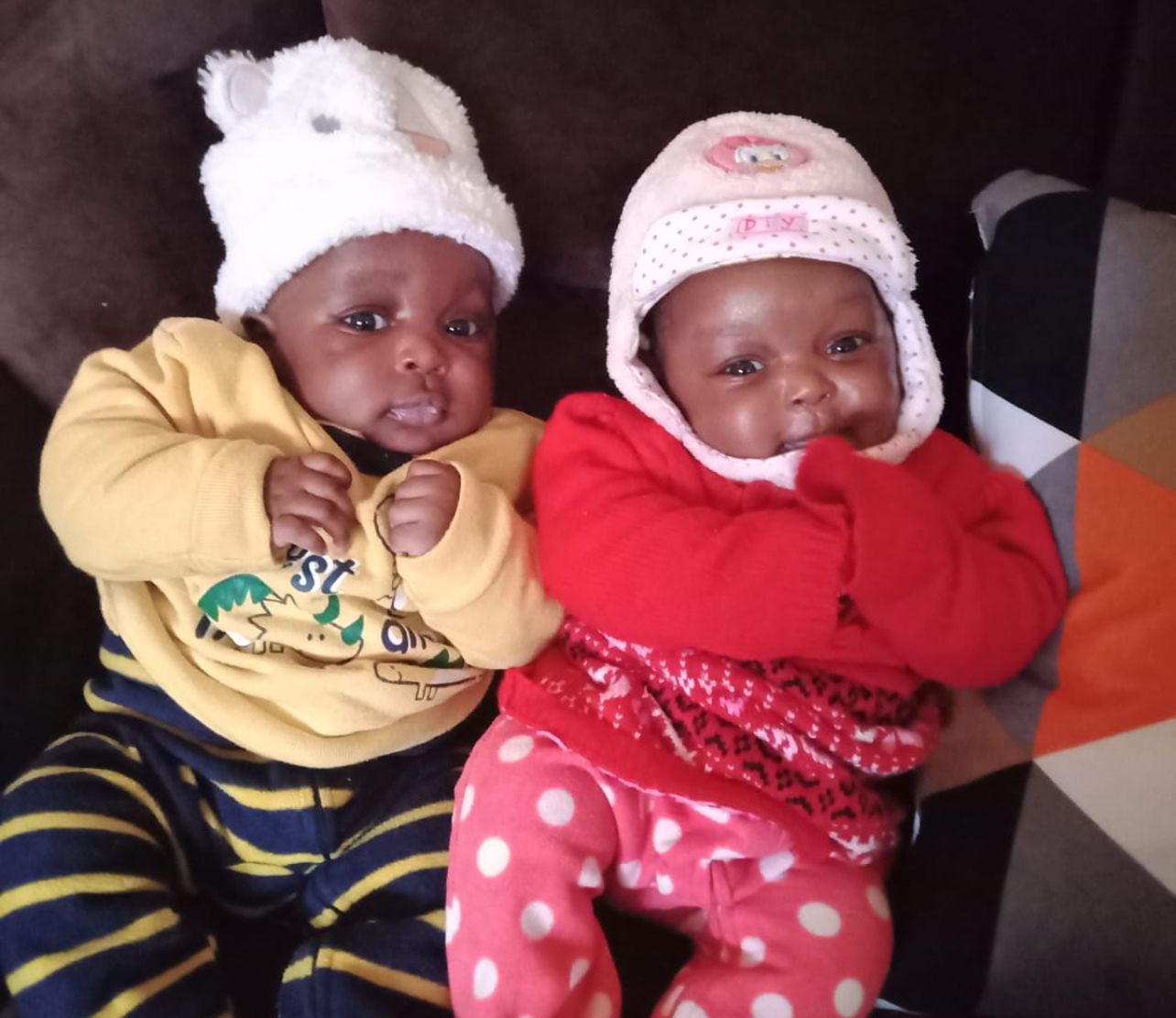
How tiny fighters overcame the odds » Capital News
By Rose Muasya
The twins, Elijah and Kena, have come a long way since their first fragile days three years ago in the neonatal intensive care unit at Mediheal Hospital in Eldoret.
From the tiny, fragile clenched fists to the high-pitched, determined cries in the incubators to their boundless energy, laughter, and curiosity today, these tiny fighters have braved the resilient journey of babies born too soon.
Their parents were deeply grateful that those fragile, nerve-wracking days were now behind them, replaced by the joy of watching their twins thrive with each new milestone.
As the world marks World Prematurity Day on Sunday, November 17, Elizabeth appreciates that taking care of babies born too soon encompasses compassion, dedication, understanding, and a genuine desire to make a difference in the lives of these tiny warriors.

Themed “Small Actions, BIG IMPACT: Immediate Skin-to-Skin Care for Every Baby Everywhere,” this year’s message emphasizes the importance of immediate skin-to-skin contact for newborns and celebrates its significant, positive effect on a baby’s health and development.
Elizabeth reflects on her challenging journey as a young mother navigating a multiple pregnancy marked by early complications.
Elizabeth Herman, a 36-year-old mother of three, did not know she was expecting multiple babies during her second pregnancy three years ago.
She had prepared for another child after an uncomplicated delivery of her first child. When she went for an ultrasound following a sharp pain in her lower belly, Elizabeth received shocking news from her gynaecologist that she had two in the uterus and that one was an ectopic pregnancy.
“The machine showed that the ectopic one was six days older than the rest and that it had the possibility of rupturing the fallopian tube as it continued developing, risking both the twins and the mother,” she said. “I was excited and scared at the same time, especially when the doctor told me the other ones had a survival rate of 10 percent,”

The doctor gave her two options: to terminate the entire pregnancy or wait for a week to get the heartbeat that would ultimately guide the medics on a possible surgery to remove the ectopic pregnancy.
She chose to wait. Her excitement and the long wait for another child could not allow her to end that pregnancy. Therefore, she was put on medication as she waited for the foetus to develop a visible heartbeat.
When she went to get another ultrasound scan before the surgery, the doctor further shocked her with the news that the ectopic pregnancy had become an invisible twin and had begun vanishing by reducing each day.
“I could not hide my joy when I was asked to remove the theatre clothes and go home to take care of my pregnancy,” she says. By five months, she had to step up in her house chores when her house help left, which strained her and affected her twins.
She began bleeding one morning after noticing that her babies were not moving as they used to after taking a warm shower.
She then rushed to the hospital and was immediately taken to the theatre to place a suture in the cervix as one of the babies had considerably dropped and was at risk of being expelled from the womb.
She was also put on total bedrest, in an inclined position with her feet raised. This was to prevent pressure on the cervix again risking opening it up and loosing the pregnancy. This caused her untold discomfort, but she endured it to save her unborn twin children.
By 33 weeks, Elizabeth could not carry the pregnancy anymore and had to be prepared to have a preterm delivery. She began by getting medication to mature the babies’ lungs, to improve their survival chances of survival.
“My family has a history of multiple gestations where the boy does not make it, and because I prayed about it, my son survived, although he was born weaker than the girl, so I had to do skin-to-skin kangaroo care.
According to her, the boy has been susceptible to infections and had adenoids at one point but the girl has been doing reasonably well.
She says although it is challenging to manage preterm babies, her family, especially her husband, has been her most extensive support system.
“A preterm baby is born at a gestational age of fewer than 37 weeks,” says Dr. Supa Tunje, a pediatrician and pediatric neurologist who is also the chairperson of the Kenya Pediatric Association. “Preterm babies have a high chance of survival even with a low birth weight of 1000 grams, but their survival goes down as the gestational age and birth weight goes lower,”
She says conditions affecting the mother and the foetus or environmental factors could lead to preterm delivery.
Some of the maternal factors that could lead to this include high blood pressure, diabetes, anaemia, or infections that the mother may have before or during the pregnancy, or placenta complications.
Further, when a foetus has infections, some genetic conditions or if there is a malformation of the baby may lead to early delivery.
She also says some environmental factors, such as trauma to the mother, and smoking, alcohol, or taking drugs and other substances may also lead to early labor.
According to her, prematurity can be prevented by controlling the factors that put both the mother and the foetus at risk of preterm delivery.
“Women should plan and prepare for a pregnancy. As soon as a woman knows that she is pregnant, she should enroll for an antenatal clinic where her vitals are checked, blood sugar and pressure are checked and controlled accordingly, and also she gets checked to see if she has any infections that can be transferred to the baby and get treated,” she explains.
Additionally, the mother should have good nutrition because poor nutrition affects the baby’s development, and chronic infections such as HIV ought to be well managed to prevent transmission to the baby.
Prematurity exposes the baby to breathing difficulties, respiratory distress syndrome, hypothermia, and hypoglycemia.
Dr Supa explains that when a baby is born prematurely, the immediate action a medic takes is to control its breathing because some babies are born with an immature breathing system, especially if they are the result of an emergency preterm delivery. When a preterm delivery is anticipated, the mother is given medication to hasten the maturity of the baby’s lungs.
For babies born too soon, medic prepare oxygen for the baby after delivery. For babies with difficulties in breathing, they are put on a Continuous Positive Airway Pressure (CPAP) machine to assist with breathing.
She also says that since preterm babies lose heat from their bodies, such babies are placed under a baby radiant warmer, that has a warming platform to keep them warm as they are stabilized.
“The smaller babies may require to be wrapped in a plastic wrap that conserves the heat for the baby, and when they can control their heat better, they can be put in a newborn unit or placed under kangaroo care,” explains Dr Supa.
A medic will also observe the baby’s glucose levels. When one is stable, feeding with mother’s milk is initiated using a feeding tube as the preterm babies are unable to breastfeed.
She also explains that preterm babies are at risk of infections. Therefore, mothers and caregivers are advised to maintain high levels of hand hygiene. They are also given supplements such as Vitamin D, Calcium, and Iron to prevent anaemia and rickets of prematurity.
“There is no need to panic. I know it causes a lot of anxiety, and this may cause a reduction in the milk flow, so the mother needs to be supported to understand that with the right care, chances of her baby surviving using the interventions put in place are excellent,” she adds.
According to Kenya Health Information Survey 2023, prematurity is one of the top three causes of newborn deaths in Kenya, causing one-third of all deaths in newborn babies, with the other two-thirds being birth low oxygen levels (asphyxia) and life-threatening infections (sepsis).
UNICEF Kenya health specialist Laura Oyiengo says there is an urgent need for more concerted efforts to improve the quality of care for preterm babies and other newborns.
“UNICEF supports Ministry of Health at both national and county level and collaborates with other partners to ensure that preterm babies receive high-quality, comprehensive health care,” said Dr Laura, who oversees maternal and newborn health at UNICEF.
Additionally at the county level, UNICEF Kenya supports the scaling up of life-saving interventions for preterm babies in health facilities.
“We collaborate with various county health ministries to establish Kangaroo Mother care units in health facilities, equip newborn units, and train staff to provide quality care to small and sick newborns,” she says.
Dr. Laura also hailed the critical role of community health promoters in caring for preterm babies and newborns discharged from the hospital.
“Community health promoters are the unsung heroes taking care of preterm babies and newborns after they leave the hospital,” said Dr. Laura.
“Their dedication is an important and invaluable resource, making a life-saving difference in these babies’ early lives, helping families feel supported and empowered during this critical time,” Dr Laura said.
Dr Laura is optimistic that with ongoing community support and awareness at the health facility, community, and household level, the hope is that more preterm babies will have the foundation for a strong start and long-term health.
Elizabeth appreciates that the specialized newborn care gave her children a fighting chance at a healthier, brighter future.
About The Author